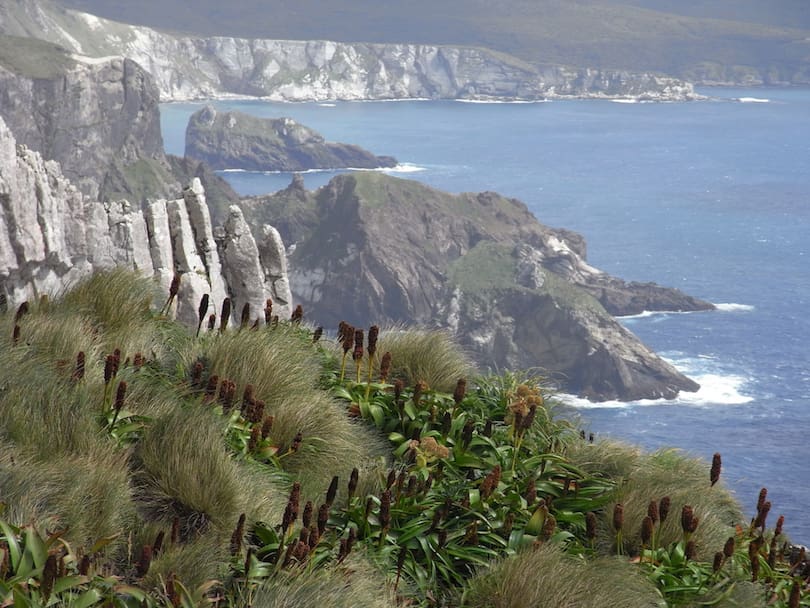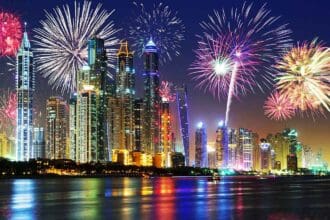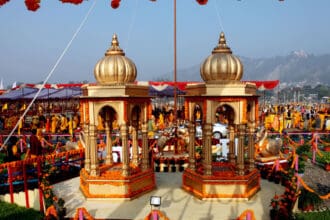Punjab, the land of five rivers, is a vibrant state in northern India that is renowned for its rich cultural heritage, colorful festivals, and delicious food. The state is home to a diverse population that celebrates festivals with great zeal and enthusiasm. Punjab is known for its traditional dances, music, and folk art that add to the charm of the festivals. In this article, we will explore the top 10 festivals of Punjab that showcase the cultural richness of the state.
1. Introduction
Punjab is a state that is steeped in culture and tradition. The people of Punjab are known for their hospitality and warmth, and their festivals are a true reflection of their vibrant culture. The festivals of Punjab are a blend of religious and secular celebrations, and they are marked with great fervor and enthusiasm. These festivals provide an opportunity for people to come together, celebrate, and share their joy with each other.
2. Baisakhi
Baisakhi is one of the most popular festivals in Punjab, and it is celebrated with great pomp and show. It is also known as the harvest festival, as it marks the beginning of the new harvest season. On this day, people dress up in colorful clothes and perform the traditional Bhangra and Gidda dances. The festival is also significant for the Sikh community as it marks the birth of Khalsa Panth.
3. Lohri
Lohri is a winter festival that is celebrated in Punjab with great enthusiasm. It is celebrated on the 13th of January every year, and it marks the end of the winter solstice. People light bonfires, dance around them, and sing traditional songs. The festival is also significant for farmers, as it marks the end of the harvesting season.
4. Hola Mohalla
Hola Mohalla is a three-day festival that is celebrated in Anandpur Sahib in Punjab. It is a Sikh festival that is celebrated a day after Holi. The festival was started by Guru Gobind Singh, and it is marked by the display of martial arts, sword fighting, and other physical feats.
5. Teej
Teej is a festival that is celebrated by women in Punjab. It is celebrated in the monsoon season and is dedicated to the goddess Parvati. Women dress up in traditional clothes, apply henna on their hands, and perform traditional dances.
6. Basant Panchami
Basant Panchami is a spring festival that is celebrated in Punjab. It marks the beginning of the spring season and is dedicated to the goddess Saraswati. People wear yellow clothes and fly kites on this day. The festival is also significant for students, as it is considered an auspicious day to start their studies.
7. Gurupurab
Gurupurab is a festival that is celebrated by the Sikh community in Punjab. It marks the birth anniversary of the ten Sikh gurus. The festival is marked by the recitation of the Guru Granth Sahib and the performance of kirtan and other religious rituals.
8. Diwali
Diwali is a festival that is celebrated across India, including Punjab. It is known as the festival of lights and marks the victory of good over evil. People light diyas and decorate their homes with flowers and rangolis. The festival is also marked by the exchange of sweets and gifts. In Punjab, people also perform the traditional Bhangra and Gidda dances to celebrate the occasion.
9. Raksha Bandhan
Raksha Bandhan is a festival that celebrates the bond between siblings. On this day, sisters tie a rakhi or a sacred thread on their brother’s wrist, symbolizing their love and protection. In return, brothers promise to protect their sisters from any harm. The festival is marked by the exchange of sweets and gifts.
10. Holi
Holi is a spring festival that is celebrated across India, including Punjab. It is known as the festival of colors and marks the victory of good over evil. People smear each other with colored powder and water and celebrate the occasion with music and dance. In Punjab, people also perform the traditional Bhangra and Gidda dances to celebrate the occasion.
Conclusion
Punjab is a state that is known for its vibrant culture and rich traditions. The festivals of Punjab are a true reflection of the state’s cultural heritage and provide an opportunity for people to come together, celebrate, and share their joy with each other. From Baisakhi to Holi, each festival has its unique significance and is marked with great enthusiasm and zeal. The colorful dances, music, and folk art add to the charm of the festivals and make them truly special.
FAQs
- What is the significance of Baisakhi in Punjab? Baisakhi is a harvest festival that marks the beginning of the new harvest season. It is also significant for the Sikh community as it marks the birth of Khalsa Panth.
- What is the significance of Lohri in Punjab? Lohri is a winter festival that marks the end of the winter solstice and the harvesting season. It is also marked by the lighting of bonfires and traditional dances.
- What is the significance of Hola Mohalla in Punjab? Hola Mohalla is a Sikh festival that is marked by the display of martial arts and other physical feats. It was started by Guru Gobind Singh.
- What is the significance of Raksha Bandhan in Punjab? Raksha Bandhan is a festival that celebrates the bond between siblings. On this day, sisters tie a rakhi on their brother’s wrist, symbolizing their love and protection.
- What is the significance of Holi in Punjab? Holi is a spring festival that is marked by the celebration of colors and music. It is also known as the festival of colors and marks the victory of good over evil.







